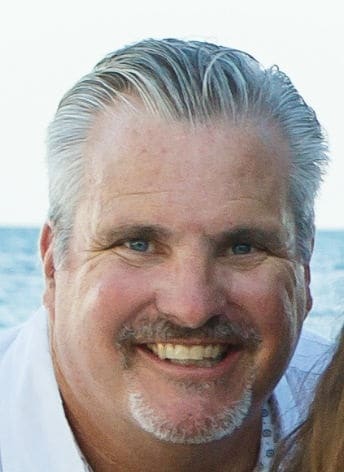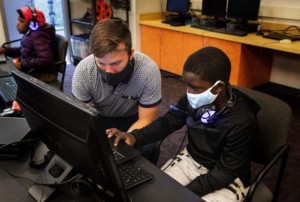Redefining Pre-Service Learning In The Virtual Age

Traditionally, teachers all over the country have gathered before school starts for pre-service professional development. For some, this can be one or two days. For others, it can be a week or even more. The purpose differs depending on the organization, but typically includes things such as instructional and curricular advancement, policy and procedural updates, technology training, and even good ol’ motivation or inspiration. But after the virtual conclusion of the 2019-2020 school year all over the country, as well most starting the 2020-2021 school year the same, many are rethinking the process of preparing for a new school year.
Starting Early
Some schools and districts didn’t wait until the standard pre-service before school, but rather created unique summer offerings for their teachers in preparation for a virtual fall start. Val Verde Unified School District in Southern California made that bold move. They launched a 64-hour professional learning series that teachers could opt to participate in from July 27 – August 5. According to Val Verde Superintendent Michael McCormick, the district’s board of education stepped up and allocated funding in order to get teachers really ready to launch virtually in the fall. Teachers—who could work either from home or at school—were paid a summer contract.
McCormick and his team were excited about their 78% teacher participation rate. “This was really unprecedented in every way,” said McCormick. “We are in unusually challenging times so it’s great to see our board and teachers respond in unusually exceptional ways.”
This is all part of the district’s new Val Verde TREK (Teaching Reaching Engaging Kids) Professional Learning Initiative, which is competency-based and rooted in adult learning theory, according to McCormick.
“We are challenging our teachers to experience a whole new level of learning that is gamified, personalized, and choice-based,” said McCormick. “The concept is based on missions where learners choose which levels they want to advance through.”
Evolving, Modeling
A long-held tradition for iLEAD Schools and the Maker Learning Network has been Camp Make—intended to be a year-long learning journey. This includes a pre-service learning experience for all facilitators and staff for five days in August, as well as two additional days for all new instructional staff. It continues throughout the school year with one week in October, one day in January, two days in March, and one day in April.
Just like all their school sites and programs, the August portions of Camp Make are 100% virtual this year. Participants are offered a wide spectrum of differentiated and scaffolded sessions based on the organization’s core mission for all learners: social-emotional wellbeing and project-based learning, according to Director of Academic Innovation Angie Nastovska. She said they will fold in cross disciplinary literacy, as well as tools and strategies for mindful guidance and support such as Love And Logic, Stephen Covey’s 7 Habits, and Character Lab to name a few.
“Camp Make helps introduce, train on, implement, assess, refine/redifice/calibrate, and sustain best practices for all learners,” said Nastovska.
This approach to professional learning also tries to model for all participants the iLEAD definition of personalized learning that facilitators are supposed to model with all learners.
“Educators know that no two students are exactly alike, and that each requires a different approach and different strategies in order to achieve optimal success,” said Matt Watson, iLEAD’s Director of Maker Outreach. “We recognize that each of our facilitators has their own unique talents, experience and background. And so just like with our students, we must differentiate the learning for them as well.”
Focus on Culture-Building
More than ever, some districts are focusing on culture, especially in the virtual environment. Joe Sanfelipo, Superintendent for the Fall Creek School District in Wisconsin, said his teachers are preparing in hybrid situations to meet both virtual and face-to-face needs and opportunities. However, Sanfelipo said he wants his teachers to really hone in on the social-emotional needs of his students early on and more than ever.
“We want them to do everything in their power to establish healthy relationships with all students during the first two weeks of school,” said Sanfelipo. He said his district has adopted the SmartStart methodology—whereby teachers create the environment for deeper learning by creating a culture that will engage students and help make meaningful connections. SmartStart aims to increase collaboration, relationships, connections, relevance, and community while reducing the affective filter.
McCormick and Val Verde concur with Sanfelipo and the Fall Creek approach. He said he and his leadership team are challenging all of the teachers to ask this essential question: How can we foster authentic human connection in a virtual environment?
“In other words, how do we create the conditions where students feel deeply connected and want to learn in this virtual environment?” said McCormick. “Normally, the first few days of school are about culture, so how do we do this virtually? How can we capture our kids’ hearts?”
Going Forward
Just like teaching our students in a new reality, educational leaders and professional learning facilitators are having to continually re-think how we facilitate adult learning for our instructional staff. Seems like more than ever there is a need to model how we can maximize and optimize both learning and wellness in the virtual environments.
For more, see:
- How Can We Make the Most of Synchronous and Asynchronous Time in Distance Learning?
- Supporting Statewide Change Through New Models For Remote Education
- Thinking Ahead: Getting Ready for the New School Year
Stay in-the-know with innovations in learning by signing up for the weekly Smart Update.
We know that educators and leaders have spent the last couple of months scrambling to meet the immediate needs of learners in their community. Thank you to each and every one of you for everything you’ve done to make the best out of this challenging situation. Now that the end of the school year is here, we’re shifting our Getting Through series from stories and advice to support remote learning or long term closures, to getting ready for the complex work of reopening schools this fall.
Interested in contributing to this campaign?
Email your stories and ideas to [email protected] or tweet using #GettingThrough to participate!







0 Comments
Leave a Comment
Your email address will not be published. All fields are required.